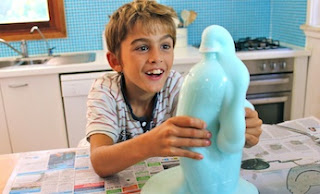| Do you have a budding Nikola Tesla or Marie Curie in your family? Guest writer Madyson Grant offers five fun and educational science projects that you can do in your own kitchen or backyard to encourage your child's interest in science. |
Developing a passion for science in the minds' of children requires more than colorful pictures and textbooks. Allow them to explore the applications of science by engaging them with hand-on projects in the home. You can show children that science can be fun and invigorate their passion for learning in the classroom. The following five projects will bring the excitement of science alive.
1. Monster Toothpaste
This project only requires a plastic bottle, hydrogen peroxide, yeast and warm water. Fill a separate container with two tablespoons of warm water and one teaspoon of yeast. Mix these together and allow them to sit for a few minutes. Then, combine these ingredients with half a cup of six percent hydrogen peroxide in your plastic bottle. The yeast provides a catalyst to the reaction and voila: growing, foamy toothpaste.2. Crazy Balloons
Making static electricity apparent can be fun as well. Begin by blowing up a large balloon and cutting up small pieces of paper with prizes on them. Rub the balloon vigorously on carpet in order to excite the molecules. Then, use the balloon that is beaming with static electricity to pick up the paper and claim prizes.3. Crayon Creation
| Related articles |
4. Rainbow Carnations
You can also use color to explain how plants and flowers use water to grow and live. By placing white carnations in water that has been mixed with food coloring, you can observe the pedals take on the colors of the water over time as the blooms continue to unfold. With the right selection of microscopes, you can also place the leaves and pedals under magnification in order to observe the changes at the cellular level.5. Lava Lamp
Explaining how oil and water repel each other has never been more funky. Create your own mesmerizing lamp by filling a bottle half with oil and half with water. Leave an inch at the top and then, add various food coloring. Drop in one antacid tablet along with one quarter. Place the bottle over a mild heat lamp and watch the magic unfold.Science comes to life with the simplest of household items. Spark a child's imagination by giving them gifts that will payoff over a lifetime. Science is cool, and the experiments prove it.
| By Madyson Grant | Subscribe to 33rd Square |
Author Bio - Madyson Grant is a small business owner who loves to blog about helpful tips to others.





0 comments:
Post a Comment